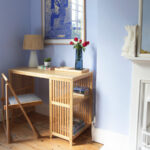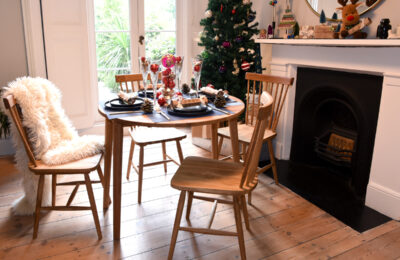
Is open-plan living becoming a thing of the past? With the summer coming to an end and nights drawing in, we tend to favour more cocoon-like spaces, which is where broken-plan living comes into its own. Whether it’s an old-school cosy snug, hidden home office or play nook for the kids, broken-plan living allows for more intimate spaces covering multiple functions without the visual clutter of structural walls.
Homes and Gardens Thea Babington-Stitt explains the importance of this latest trend: “Broken-plan living room ideas have slowly been coming into their own over the past few years. Initially thought of as a response to the pandemic, it seems these divided spaces are certainly no fad, and in fact, their benefits outweigh those of an open-plan room.”
But what are the advantages of this layout and why is it so appealing? “A broken-plan room can be much more functional than an open-plan living room, allowing different members of the family to inhabit the same space without distracting each other. But it’s not just a practical move. Broken plan layouts can create cosy living rooms while still maintaining an open feel,” Babington-Stitt adds.
Broken-plan living is all about the clever use of a space, but how do we get started? Here are our top five things to consider when constructing your new area:
Set your zones
Open-plan living is all about social interaction and creating one room to provide a multitude of functions – but giving people the flexibility to have their own space away from each other and a sense of separation is also important. Non-permanent options such as room dividers, bookcases and tall plants can help zone areas. Whether it’s for cooking, dining, working, cleaning or relaxing, modifying your space will allow for privacy away from the rest of the family, yet still retain that spacious feel of open-plan living.

Use furniture wisely
As well as a key function for everyday family life, social seating is going to be big in 2024 – but make it cosy by strategically positioning furniture to form natural barriers and pathways. Divide your room up with large sofas and place them towards each other for family time and socialising.

Find a work hideaway
Create a nook that can be turned into an enviable WFH office. Opt for a nifty ladder desk for superb convenience, or a wall desk (try Quill or Folio) that can be folded up at the end of a working day, hiding away laptop, papers and stationery. And why not complete the look by pairing your desk with our Folio shelving unit for additional privacy? Sorted.

Take advantage of lighting
Zone with smart lighting and colour. Bright lights can be used to highlight ‘high-traffic’ areas such as the kitchen and dining space, while a softer glow from a table or floor lamp helps illuminate cosy corners for reading and relaxation.

Tweaking here and there
Structural or permanent changes may not be an option, but there are still ways in which you can achieve a broken-plan layout. Using decoration and materials is a great alternative way to create spatial division within your home. A simple change – such as painting walls in contrasting colours, laying different types of flooring and rugs to show boundaries in open areas, or colour-coordinating your textiles and accessories for separate zones – can make a huge difference.

So, interested in the broken-plan living movement? Get ahead of the change in season and start a cosy retreat with a little help from us. For more ideas, visit us in-store or online now.





